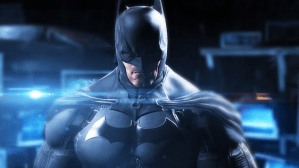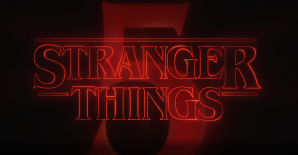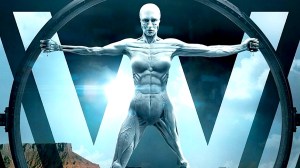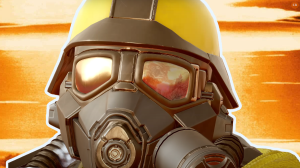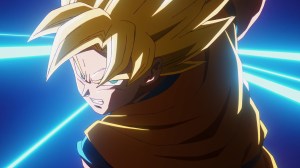Tonight on Superman & Lois, John Henry Irons — the superhero known as Steel — got a name-drop. This marks his second appearance in live-action, after a 1997 feature film in which he was played by Shaquille O’Neal. As co-creator Jon Bogdanove, the longtime artist on Superman: The Man of Steel, points out, being 7′ tall might be nice for John Henry’s visual, but it’s hardly a guarantee that the final product is going to come out the way you want it. The character, who debuted during “The Reign of the Supermen,” has gone on to be one of DC’s most popular characters created since 1986’s Crisis on Infinite Earths continuity reset.
Videos by ComicBook.com
Now, he’s coming to TV. And in a pretty unexpected way — one that leaves fans wondering what else is coming around the corner.
Bogdanove joined Comicbook to discuss the latest news coming out of Smallville. Spoilers ahead for “Man of Steel,” tonight’s episode of Superman & Lois.
Recently, you broke down the 1997 Steel movie with Shaquille O’Neal on a podcast. Did that sour you on the idea of John Henry Irons coming to live action?
No! I’m excited to see anytime he comes up. I still quite love the character, and it’s interesting, and also kind of dear, to see him show up whenever he shows up either in the comics or on TV. I relish the idea of him being on Superman & Lois. I, my understanding is he starting out a lot differently, because he’s an alternate universe version, so he’s not really our John Henry Irons.
But that said, I think DC needs that character. I think that he ultimately adds a lot to the Superman milieu — into the Superman cast — to have him to have essentially a DIY Iron Man, who’s a mortal knight in armor, trying to back up the number one superhuman.
John Henry is, is a story of heart and grit. I almost don’t care what the costume looks like — although I hope it looks good. I almost don’t care if they play around with his origin. What I care most about is that the character that Louise Simonson and I created, who is in many ways a Superman fan, that he shares Superman’s genuine altruism.
He shares Superman’s compassion. He shares Superman’s sentimentality. And those are his motivations. He’s a big strong guy, but he’s still mortal. He’s not invulnerable. He can’t fly without help from his armor. He’s just a guy, but he he builds a suit that mimics superpowers.
I think he’s a good character to have in the background, and to focus on occasionally, in the Superman mythos. I’m looking forward to seeing it. There’s a lot of good about that show, and so I hope they do it well, and honor it.
I understand the actor is not seven feet tall, as John Henry is in the in the comics, but but there’s a possibility he can act, which would be good. I hope that the costume looks nice. I hope that they use our reference. And I hope they have the courage to give him a cape. I think the hammer and the cape are necessary to the distinctive likeness of the character. I think the, the cape and hammer give him a niche, where he’s not just another guy in a mech suit and not an Iron Man rip off, but something different. He’s sort of the Metropolis Knight.
What do you make of him starting out as a villain?
I think it can end up dovetailing with the comic book version of Steel just fine, because as fans of Steel know, part of what motivates him is the fact that he used to be a munitions designer, and he invented and he suffers from the guilt of having invented things that kill people. So he invented a suit to help save people in. So coming from that redemption side of the character is consistent between the comics and the TV show, even if the specifics are different.
We’ve seen the suit that Captain Luthor wears, and I’m assuming it’ll get tweaked if he takes on a different identity. I think when he, when he takes on a different identity, that’s a perfect opportunity to redesign the suit, to become the iconic distinctive likeness that is marketable as toys and games and stuff like that.
Are you worried about the aesthetic?
All the CW shows, actually, I think look pretty good. I’ve been a fan of most of them, because generally speaking, writing DC characters is different from writing Marvel characters. The bulk of Marvel was created by Stan Lee and Jack Kirby, or Stan Lee and Steve Ditko, and it naturally fits itself into a cohesive model, into a shared universe.
DC characters are all different. They were all created in their own universes, where they were the only superhero. They were all created by different creators, with different perspectives, and all very different. So you have characters that are silly and preposterous and humorous, and your characters were dark and serious and street-level and, and science fiction characters and magic characters. There are a lot of different styles and perspectives of characters, and they can’t all be Batman.
One of the things I admire and respect about The CW people, is that they’ve always escaped that thing the movies did not escape, where everything has to be like Batman. Whatever the show is — whether it’s Arrow, which they spun like their Batman, or Supergirl, or The Flash, which is my favorite, they actually assess the comic books themselves, and try to hone in on the real, intrinsic charm of the character, and on whatever makes that character work. They run right at all of it, including the silly stuff, including the zany, mid-60s, wacky stuff. They don’t shy away from that.
They also hit the real human drama, and the real interest of the characters. Some people who scoff, like “well, these are kids’ shows,” and yeah, so what? I think the target audience is middle school, but I think a good middle-schoolers’ show, just like good children’s literature or YA literature, should appeal to everybody. If it’s good. If it’s good, it transcends its target audience. I think The CW’s shows do that.
Can you break down how Steel as a character was created?
Louise Simonson, or Mike Carlin, or somebody just thought that it might be good, and refreshing to the team for everybody to be able to go their own way for a while, and for us not to be locked into each other’s continuity quite as much. Part of the reason for that is. You know, every story arc has a beginning, a middle and an end, and the end is usually where all the exciting fighting happens, and the middle is all the human interest, supporting character stuff. And it’s true that most of us artists are always vying to get the closing chapter, because we wanted to draw the fight scenes. I certainly wanted to draw the fight scenes.
I think all of us felt like we were doing a lot of the stuff in between — which is great. I mean, I I love all our storylines with Keith and Lois and Perry and the Underworlders, and Metropolis in general. But you know, most of us got the comics to draw people punching people.
I think part of Mike’s logic — and again, it might’ve been Weezie, or it might have been Dan Jurgens — but Mike might have thought of it himself…because I remember the subject of the “Substitute Supermen” came up from back in the sixties.
They did a storyline where there were all of these substitute Supermen, who would come in in a pinch. The idea was that we would, we would unlock the lockstep continuity that we were all following. We’d still keep things coordinated with each other, we would do all our own stories for a few issues, with beginnings and middles and ends for all us. It would give us a chance to do all the fight scenes we wanted. So it wasn’t really about pitching a replacement Superman. It was really from the start, I think, meant to be a breather for everybody, and a chance to do a little solo stuff, and to generate new IP.
For more from our conversation with John Henry Irons co-creator Jon Bogdanove, keep an eye on ComicBook.com between now and next Tuesday, when the next episode of Superman & Lois will air at 9 p.m. ET/PT on The CW.


